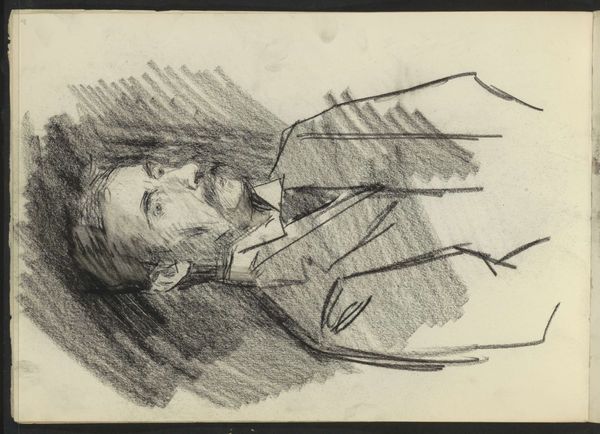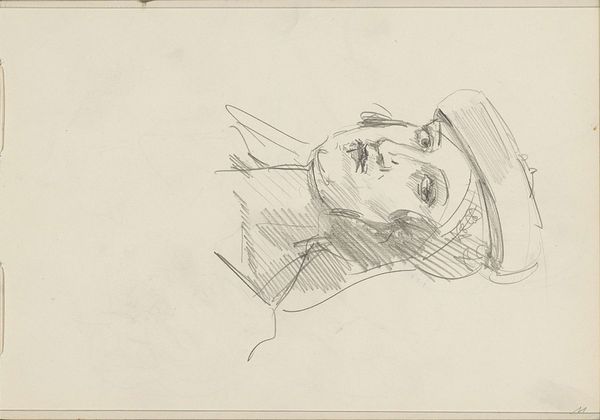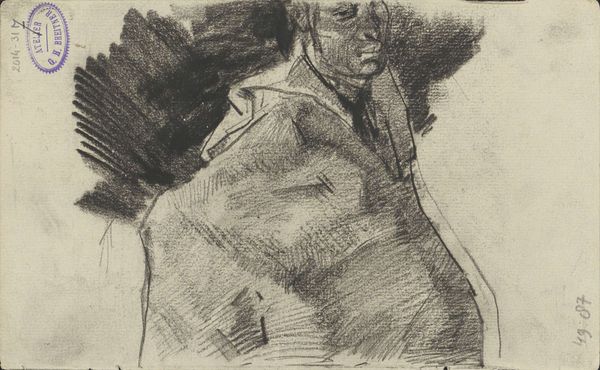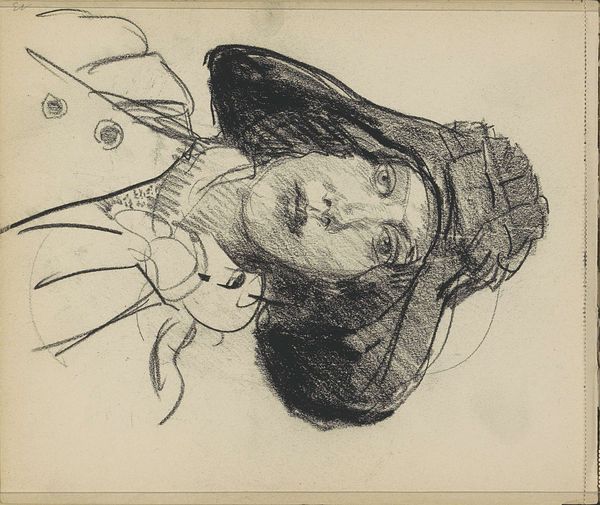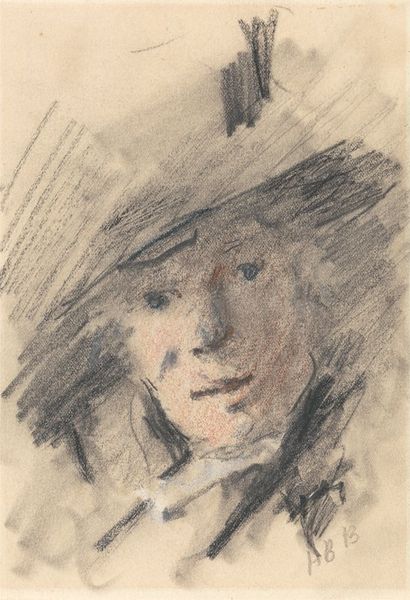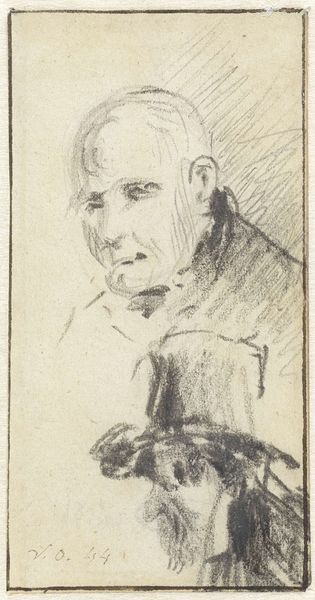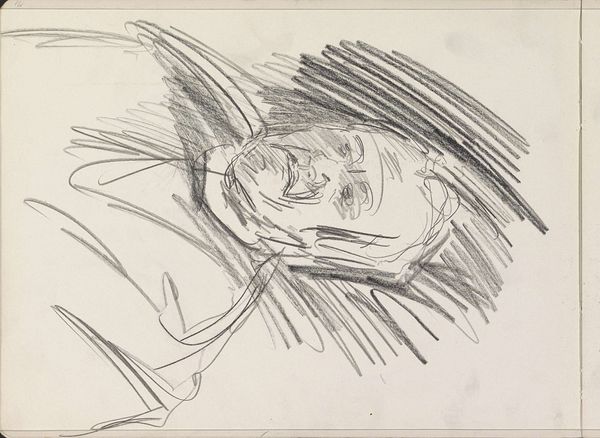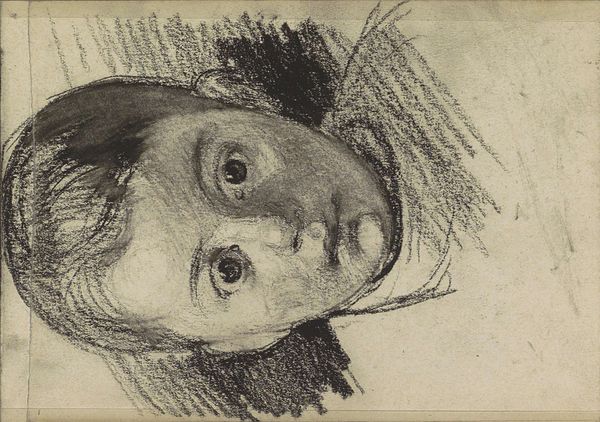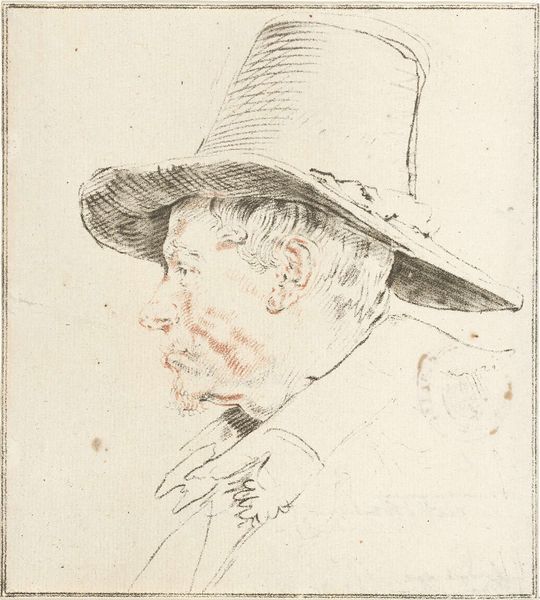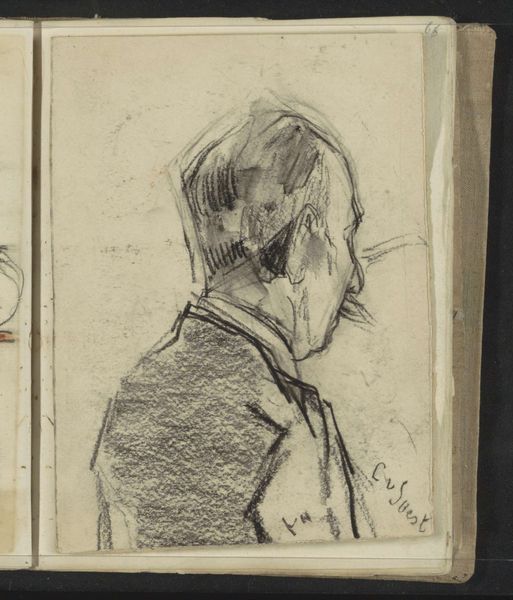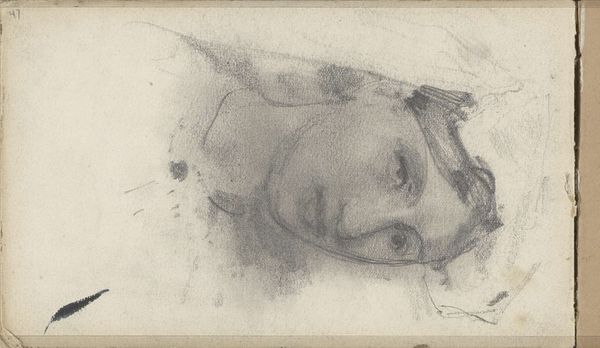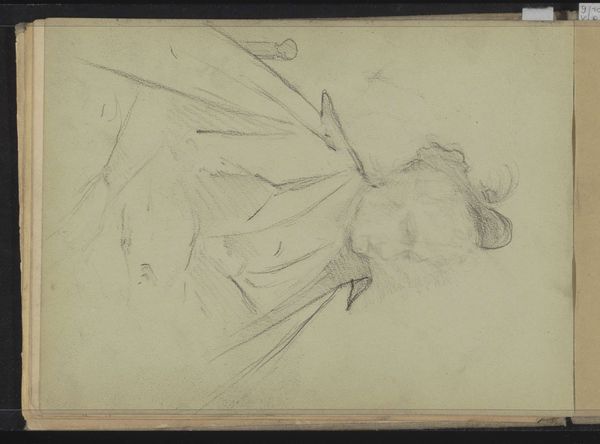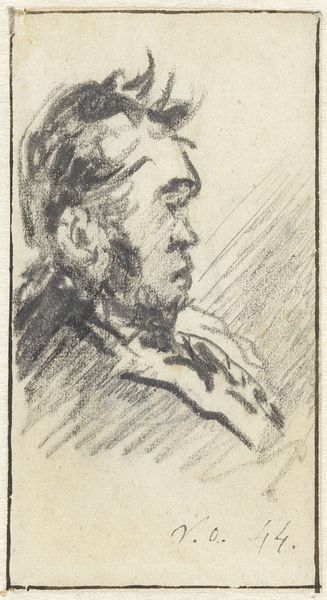
drawing, pencil, charcoal
#
portrait
#
drawing
#
pencil sketch
#
charcoal drawing
#
charcoal art
#
pencil drawing
#
pencil
#
portrait drawing
#
charcoal
#
post-impressionism
#
realism
Copyright: Rijks Museum: Open Domain
Curator: Looking at this intriguing piece, what captures your eye first? Editor: The sheer vulnerability. There's an almost haunting quality to his gaze, or lack thereof, given his eyes are averted. I immediately wonder about the power dynamics at play, both within the sitter's life and reflected in this very act of portraiture. Curator: It's interesting that you immediately bring up power. This is “Portret van een man in een pak”, or "Portrait of a Man in a Suit" by Carel Adolph Lion Cachet, likely created between 1895 and 1900. What's striking to me is Cachet's manipulation of seemingly simple materials – charcoal and pencil on paper – to achieve such a layered texture. Editor: Absolutely. Considering the suit, what statements can we derive from the artist's conscious rendering of such obvious attire? Curator: Indeed. The materials speak to a fascinating tension between accessibility and artistry. Charcoal and pencil are readily available, democratic even, but the skill employed here elevates it beyond a mere sketch. I'm intrigued by how the seemingly rushed quality implies immediacy. A contrast exists between that urgency and the deliberate craft used in applying the charcoal, with such pressure variations. Editor: A man dressed in a suit towards the turn of the century signals certain levels of class and societal privilege. To contrast this notion of "higher" society, perhaps the chosen medium symbolizes the "lower" or working classes and therefore creates a sort of commentary or juxtaposition to draw on societal issues. How was the role of class negotiated through art, even within portraiture? The man’s averted gaze could read as shame or introspection born of a deep class consciousness. Curator: I think we could even interpret the apparent anonymity afforded to the subject, being only titled "portrait of a man" as representative of the rise of capitalist consumption, or mass production— that reduces an individual's life to pure utility within the machinations of labour. A subtle critique through material, perhaps? Editor: The lack of further specificity forces the viewer to fill in the gaps, engaging us to grapple with our assumptions. But at the end, it is simply just an incomplete moment, a sketch... We should perhaps be weary of applying broad assumptions. Curator: Right, both material constraints and societal structures informed Cachet's artistic choices. Editor: Well, it’s certainly given me a lot to contemplate. It all comes together to tell a story far beyond the simple title.
Comments
No comments
Be the first to comment and join the conversation on the ultimate creative platform.
